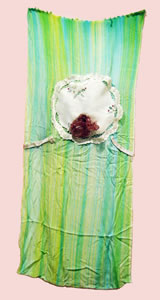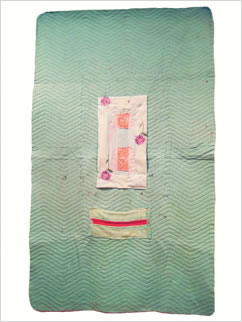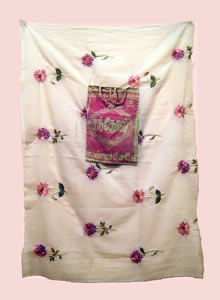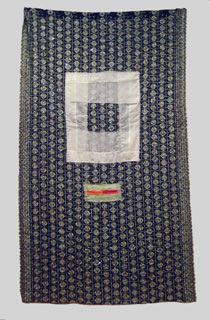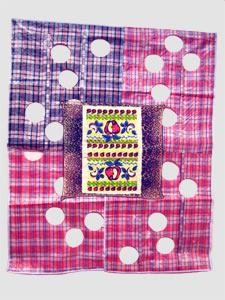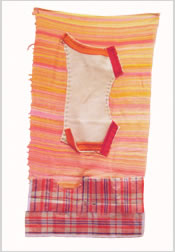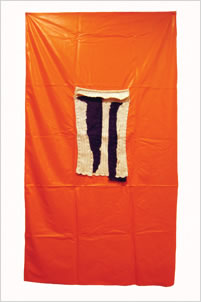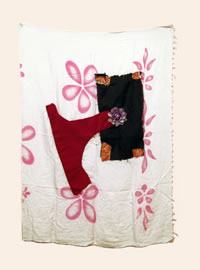


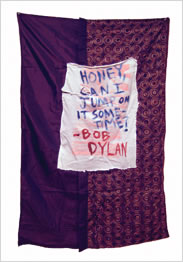
Main Space
Calais Guild Prayer Blankets (September 13 - December 20, 2009)
The town of Calais lies on the banks of the St. Croix River -- a narrow expanse separating eastern Maine from Canada. It is one of those places seemingly lost to time. For the past one hundred fifty years, Calais' shrinking population has remained overwhelmingly Caucasian (97%). Today it clocks in at just under 3,500.
Food poisoning was the reason we ended up in Calais in the summer of 2004. On a drive from New York to Nova Scotia, we stopped so Shelly could upchuck and then stayed for two days while she slept. Peter staved off boredom by reading and taking long walks around the town. It was during one of these walks that he stumbled upon an old church with its doors open and a group of women sewing inside.
The quilt-like objects hanging in this show were recreations of blankets made by these women, all members of the Calais Guild. Founded in the 1880s, the group meets several times a week to discuss local and domestic issues -- family, spirituality, sexuality, sickness -- and to make things from the old, often stained or torn clothing and scaps of fabric that the woman brings to the meetings. (It is considered gauche to bring something new: it is essential that the materials have a history, a story already in the making.) The two activities -- talking and sewing -- generally happen simultaneously and the resulting objects are called "prayer blankets." Sometimes the women exchange the blankets among themselves, but more often than not they gift them to people going through crises or symbolic life-transitions. For both the giver and the recipient, the purpose in having one of these blankets is to benefit from its energy.
All of the blankets exhibited were reconstructed from photographs Peter took on that memorable trip. Guild members would not allow their creations to be sold, exhibited, or lent, but flattered by Peter's curiosity and enthusiasm (and attracted to his Keith-Partridge-looks) several let him take snapshots. He took the photos quickly, asked a few questions, and then left.
By craft -- even artistic -- standards there prayer blankets are not very good. They show little technical virtuosity and the compositions are simplistic and haphazard. They also seem to lack any deep understanding of the medium's history. The crude use of throwaway materials -- with the same types showing up repeatedly across multiple examples -- lends the works a type of homeyness, but also a kind of hokeyness. But all in all, they evoke a freshness and lack of self-consciousness that is rare in contemporary art today.
